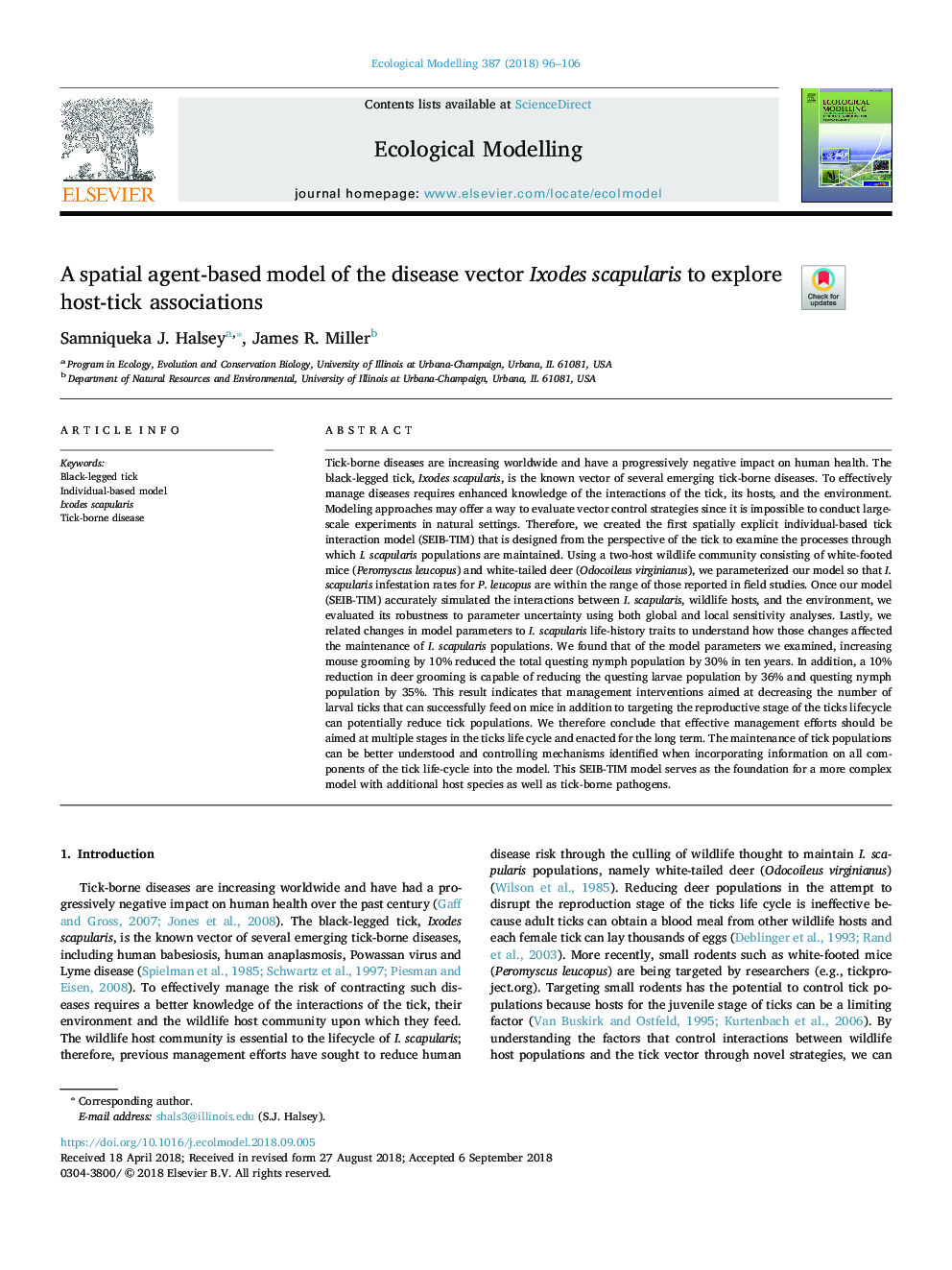| Article ID | Journal | Published Year | Pages | File Type |
|---|---|---|---|---|
| 10149451 | Ecological Modelling | 2018 | 11 Pages |
Abstract
Tick-borne diseases are increasing worldwide and have a progressively negative impact on human health. The black-legged tick, Ixodes scapularis, is the known vector of several emerging tick-borne diseases. To effectively manage diseases requires enhanced knowledge of the interactions of the tick, its hosts, and the environment. Modeling approaches may offer a way to evaluate vector control strategies since it is impossible to conduct large-scale experiments in natural settings. Therefore, we created the first spatially explicit individual-based tick interaction model (SEIB-TIM) that is designed from the perspective of the tick to examine the processes through which I. scapularis populations are maintained. Using a two-host wildlife community consisting of white-footed mice (Peromyscus leucopus) and white-tailed deer (Odocoileus virginianus), we parameterized our model so that I. scapularis infestation rates for P. leucopus are within the range of those reported in field studies. Once our model (SEIB-TIM) accurately simulated the interactions between I. scapularis, wildlife hosts, and the environment, we evaluated its robustness to parameter uncertainty using both global and local sensitivity analyses. Lastly, we related changes in model parameters to I. scapularis life-history traits to understand how those changes affected the maintenance of I. scapularis populations. We found that of the model parameters we examined, increasing mouse grooming by 10% reduced the total questing nymph population by 30% in ten years. In addition, a 10% reduction in deer grooming is capable of reducing the questing larvae population by 36% and questing nymph population by 35%. This result indicates that management interventions aimed at decreasing the number of larval ticks that can successfully feed on mice in addition to targeting the reproductive stage of the ticks lifecycle can potentially reduce tick populations. We therefore conclude that effective management efforts should be aimed at multiple stages in the ticks life cycle and enacted for the long term. The maintenance of tick populations can be better understood and controlling mechanisms identified when incorporating information on all components of the tick life-cycle into the model. This SEIB-TIM model serves as the foundation for a more complex model with additional host species as well as tick-borne pathogens.
Related Topics
Life Sciences
Agricultural and Biological Sciences
Ecology, Evolution, Behavior and Systematics
Authors
Samniqueka J. Halsey, James R. Miller,
